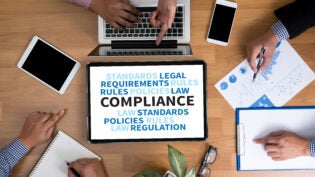
The idea of starting a small business can be exciting to many would-be entrepreneurs, opening up the opportunity for job flexibility and the freedom to call your own shots.
However, even though running a business can be fulfilling and offer the chance to build wealth, it’s not always the cheapest endeavor. If you’re interested in starting a business, here are six expenses you need to be prepared for right off the bat.
1. Insurance
Many people don’t think about insurance as something they need for their business. However, depending on the type of operation you run, you might need to consider one or several different types of business insurance, including:
- General liability
- Professional liability
- Workers’ compensation
- Business property insurance
These policies can cost between $40 and $90 per month. You can also consider getting a business owner’s policy, which would bundle multiple coverages together, resulting in overall savings. If you plan on adding health insurance for employees, you’re looking at hundreds more.
2. Taxes
Don’t be surprised by taxes. When you’re a business owner, the IRS expects you to make quarterly estimated tax payments. If you don’t make these payments on time, you might be subject to penalties and interest, depending on the situation and how much you’ve underpaid.
To avoid penalties and interest, set up a regular schedule to make payments. The IRS even offers automatic plans that let you pay quarterly or even monthly. Breaking down your payments into smaller chunks might make them more manageable.
Don’t forget your state taxes as well, if applicable.
3. Licensing and permits
In many states, you need to obtain a business license — and that can come with a fee. Each state has its own costs for licensing, so you can expect to pay anywhere from $15 (Alabama) to more than $6,000 (Illinois), depending on the type of business you have.
On top of that, you might be required to have various permits, depending on the type of business you operate. Food businesses might be required to obtain food handling permits and health permits. If you want to run a salon, you might need a state-based cosmetology license.
Research what’s required by checking with your state government. The Secretary of State, the Department of Revenue or the Department of Labor should be able to help you find out what licenses and permits you need — and how much they cost. There really isn’t a way to avoid these costs, so plan and save up for them.
4. Interest on loans and credit cards
In some cases, you might need to obtain loans or other financing to pay for your startup costs. The Small Business Administration announced that SBA loans amounted to $44.8 billion in fiscal year 2021. If you don’t get a capital loan, you might end up using credit cards for the business. When you carry a balance, you pay an APR of between 8% and 24%. Other types of financing, though, can be even more costly. Invoice financing can sometimes carry a rate of up to 60%, while the APR on a merchant cash advance can hit triple digits.
To reduce your financing costs, consider only borrowing what you absolutely must. Look for a business credit card with a 0% APR introductory offer to give you time to make necessary purchases without worrying about interest. If you do use a business credit card, try to pay it off each month to avoid accruing interest on the balance.
5. Marketing
Attracting customers to your business is essential if you want to succeed — and that means spending money on marketing. In general, a business-to-business company might spend 6.3% to 7.9% of revenues on marketing. A business-to-consumer company, on the other hand, is likely to spend more, perhaps 9.6% to 11.8% of revenues on marketing.
That said, there are ways to reduce what you spend. If you use social media, savvy videos and posts can help you get the word out about your business for free. Additionally, you can consider using ad credits. Many services allow you to set a daily limit, so you can fit your marketing into your current budget.
6. Administrative costs
Administrative costs, like utilities, office supplies and software, help a business run. They can often also surprise you, since they’re usually small at first. If you have a physical location, for example, you might not have thought about buying cleaning supplies — but they’re necessary. You might also have to worry about the cost of electricity and the internet to keep your business running.
Take a step back and think about the little things that you might need to run your business. This could include accounting software like Quickbooks, filing systems to keep paperwork organized or even pens and paper clips. Over time, these items add up.
Before splurging on the newest items, see if you have anything already available to you. You can also shop around for the best deals when you can and look for coupons and discounts to save money upfront as you grow your business. Finally, consider using a cashback business credit card to make purchases to reap the rewards later. Just make sure you pay off the balance each month to avoid interest charges.
1443 Views












